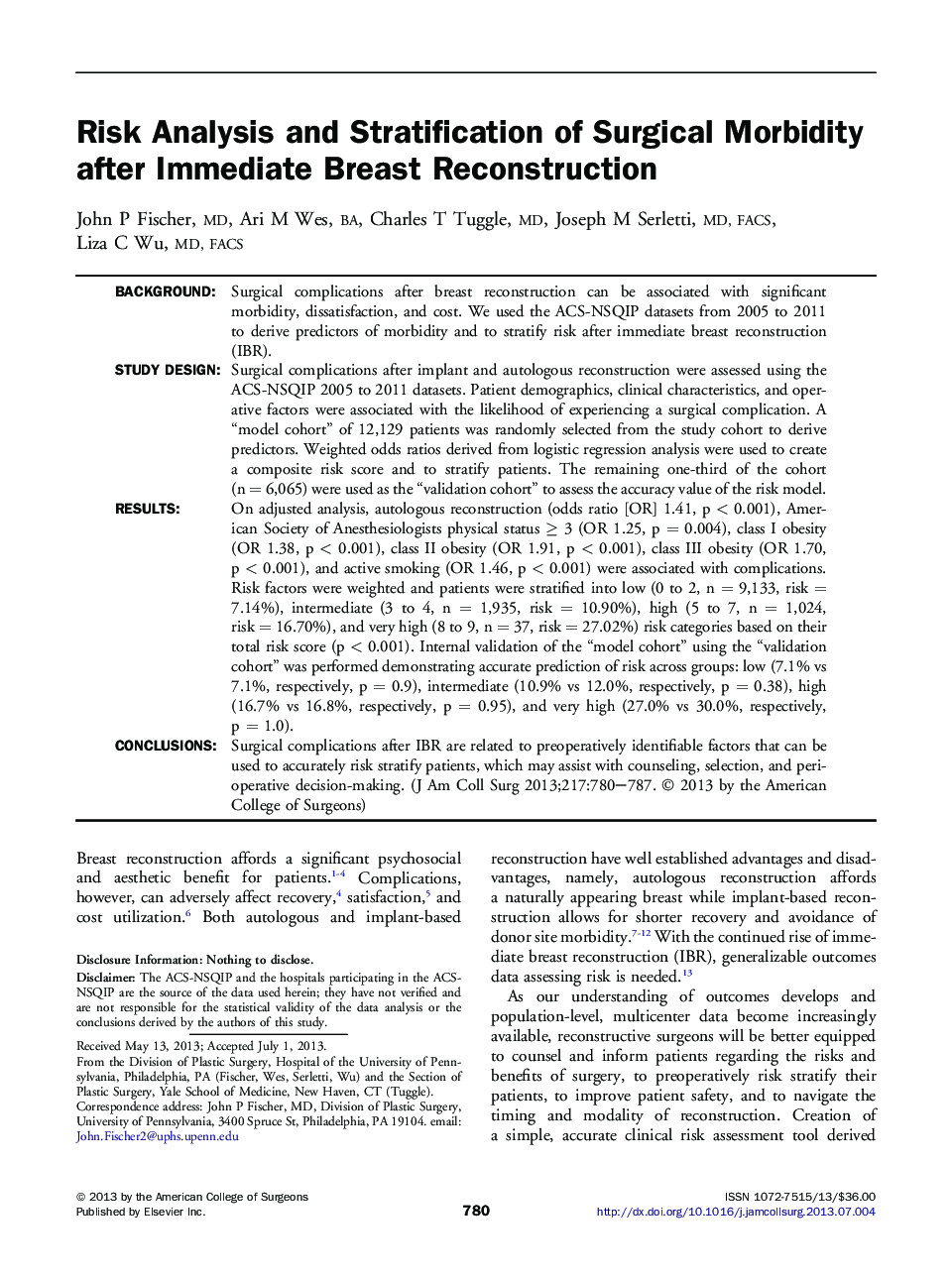| کد مقاله | کد نشریه | سال انتشار | مقاله انگلیسی | نسخه تمام متن |
|---|---|---|---|---|
| 6253083 | 1612240 | 2013 | 8 صفحه PDF | دانلود رایگان |
BackgroundSurgical complications after breast reconstruction can be associated with significant morbidity, dissatisfaction, and cost. We used the ACS-NSQIP datasets from 2005 to 2011 to derive predictors of morbidity and to stratify risk after immediate breast reconstruction (IBR).Study DesignSurgical complications after implant and autologous reconstruction were assessed using the ACS-NSQIP 2005 to 2011 datasets. Patient demographics, clinical characteristics, and operative factors were associated with the likelihood of experiencing a surgical complication. A “model cohort” of 12,129 patients was randomly selected from the study cohort to derive predictors. Weighted odds ratios derived from logistic regression analysis were used to create a composite risk score and to stratify patients. The remaining one-third of the cohort (n = 6,065) were used as the “validation cohort” to assess the accuracy value of the risk model.ResultsOn adjusted analysis, autologous reconstruction (odds ratio [OR] 1.41, p < 0.001), American Society of Anesthesiologists physical status ⥠3 (OR 1.25, p = 0.004), class I obesity (OR 1.38, p < 0.001), class II obesity (OR 1.91, p < 0.001), class III obesity (OR 1.70, p < 0.001), and active smoking (OR 1.46, p < 0.001) were associated with complications. Risk factors were weighted and patients were stratified into low (0 to 2, n = 9,133, risk = 7.14%), intermediate (3 to 4, n = 1,935, risk = 10.90%), high (5 to 7, n = 1,024, risk = 16.70%), and very high (8 to 9, n = 37, risk = 27.02%) risk categories based on their total risk score (p < 0.001). Internal validation of the “model cohort” using the “validation cohort” was performed demonstrating accurate prediction of risk across groups: low (7.1% vs 7.1%, respectively, p = 0.9), intermediate (10.9% vs 12.0%, respectively, p = 0.38), high (16.7% vs 16.8%, respectively, p = 0.95), and very high (27.0% vs 30.0%, respectively, p = 1.0).ConclusionsSurgical complications after IBR are related to preoperatively identifiable factors that can be used to accurately risk stratify patients, which may assist with counseling, selection, and perioperative decision-making.
Journal: Journal of the American College of Surgeons - Volume 217, Issue 5, November 2013, Pages 780-787
